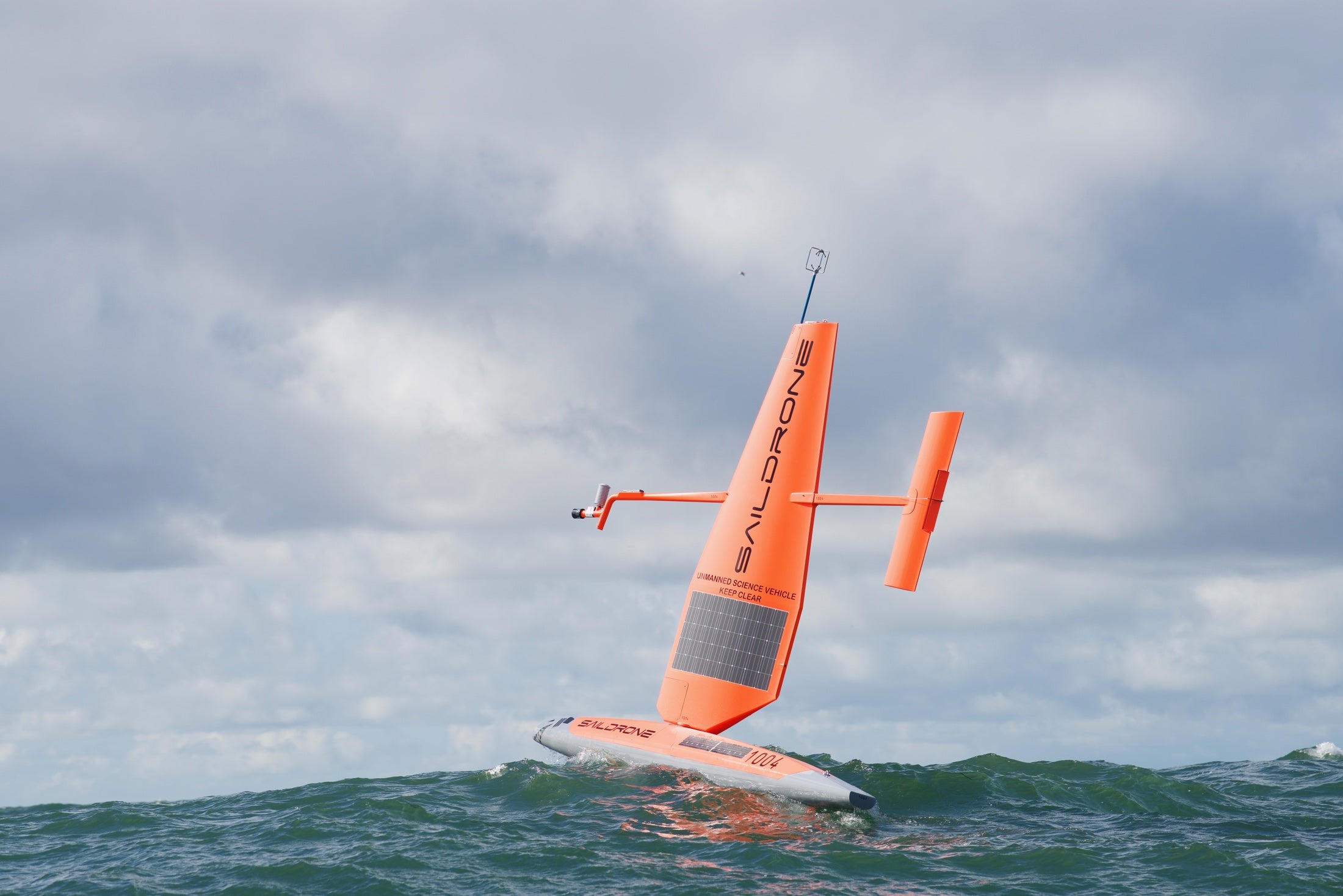
Saildrone, a wind-powered surface vehicle, has become the first unmanned system to successfully circumnavigate Antarctica, bringing back valuable climate change data with it.
The Saildrone left Bluff, New Zealand, in January 2019, to venture around Antarctica, taking 196 days to return to its starting point. The vehicle navigated through freezing waters, overcoming 15-meter high waves, 130 km/h winds and a minefield of giant icebergs to complete the 22,000km journey.
The system combines wind-powered propulsion technology with solar-powered sensors. This allows for long-range data collection missions without the need for a human crew, which allows the vehicle to enter harsh waters without causing risk to life.
Saildrones are programmed to navigate autonomously from one place to another, and can last up to 12 months at sea travelling over 100km per day on average.
There are currently 30 Saildrone vehicles deployed around the world, collecting data on everything from oil spills, to wildlife, to illegal vessels.
Saildrone Antarctica mission provides valuable climate change insight
Sponsored by non-profit Li Ka Shing Foundation, the mission was launched to gather data in the Southern Ocean – a region that plays a key role in the regulation of Earth’s carbon and heat, yet has gone largely unstudied due to its inhospitable conditions.
How well do you really know your competitors?
Access the most comprehensive Company Profiles on the market, powered by GlobalData. Save hours of research. Gain competitive edge.

Thank you!
Your download email will arrive shortly
Not ready to buy yet? Download a free sample
We are confident about the unique quality of our Company Profiles. However, we want you to make the most beneficial decision for your business, so we offer a free sample that you can download by submitting the below form
By GlobalData“One of our largest ‘blind spots’ in terms of our climate knowledge and its future prediction lies in the Southern Ocean,” Sebastiaan Swart, co-chair of the Southern Ocean Observing System explained.
The Saildrone was fitted with numerous climate-grade sensors, including an instrument designed by the US National Oceanic and Atmospheric Administration that could precisely measure carbon fluxes. The study found that significant amounts of carbon dioxide are released by the Southern Ocean during winter months.
This data, which could have a major impact on current global climate models, will provide scientists with better insight to produce future climate changes.
Likewise, the journey also showed how floating instruments could be deployed in remote regions like the Southern Ocean to continue collecting value climate data.
“It is vital that we drastically improve the understanding of our oceans, which are one of the key drivers of our climate, and ultimately our future,” Richard Jenkins, CEO of Saildrone, said.
“The extreme weather conditions of the Southern Ocean winter were the final frontier for Saildrone and with the completion of the Antarctic circumnavigation, there is now no part of the world’s oceans that we cannot measure.”
Read more: Researchers develop PV solar panels capable of producing drinking water







